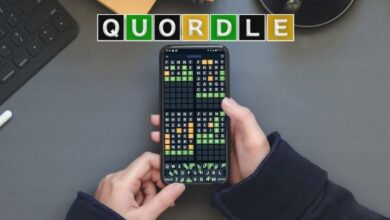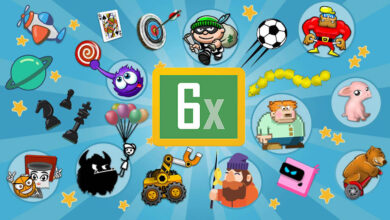Master the Game with This Expert Billiards Gear Guide

The right gear in billiards can elevate your game, giving you precision, control and confidence at the table, elevating your raw skills to new heights. Whether you’re a seasoned player or just starting, investing in quality equipment can make all the difference in how you play and enjoy the sport.
From cues to chalk, each piece of billiards gear serves a purpose, and knowing what to choose can feel overwhelming. But with the right guidance, you’ll be able to figure out the options and find gear that suits your style and level. Let’s explore how you can build a setup that not only looks professional but performs flawlessly.
Essential Pieces of Billiard Gear
A well-equipped billiard player benefits from investing in quality gear. Each item adds precision, durability, or style to your game, ensuring a seamless and professional experience.
Pool Cues
Your cue is central to every shot, dictating control and accuracy. You might prefer a hardwood cue for power or a composite one for durability. Consider weight and tip size based on your play. Custom cues can enhance personal comfort, while pre-made options suit those refining technique. Quality cues often have intricate detailing, showing craftsmanship in their design.
Pool Cue Cases
A good case protects your cue from damage during transport or storage. Choose hard cases for maximum security or soft cases for lightweight portability. Cases might feature compartments for chalk, gloves, or tip tools, keeping essentials together. Opt for models with durable exteriors and reinforced edges to ensure long-term use. Custom designs can also reflect personal style or professionalism.
Chalk And Tip Tools
Chalk improves friction between the cue tip and ball, reducing miscues. Choose quality chalk that matches your playing surface, balancing consistency and adhesion. Tip tools like shapers or scuffers refine the tip for optimal performance. In your kit, these items will likely become everyday essentials.
Pool Gloves
Pool gloves improve grip and reduce friction for smooth strokes, especially on humid days. Materials like Lycra or leather combine comfort and functionality. Many gloves feature open-finger designs for flexibility while maintaining control. You will spot these in competitive settings, where even small advantages impact performance.
Choosing The Right Pool Table
Selecting a pool table involves balancing practicality and performance. You will find that understanding specific features helps match your preferences and space requirements.
Table Sizes And Materials
Pool tables come in standard sizes ranging from 6 to 9 feet. Smaller tables, like 6-foot options, fit compact spaces and suit beginners, while 8 or 9-foot tables cater to competitive players. To determine the right size, measure your room dimensions, accounting for cue clearance. Solid hardwood, such as maple or oak, ensures durability and stability. MDF offers a budget-friendly alternative, though it lacks the same precision. For the surface, slate tops provide consistent ball roll and longevity. Single-piece slate ensures smooth play, while three-piece slate allows for easier levelling.
Cushions And Felt Options
Cushion type determines the ball’s rebound quality. High-grade gum rubber cushions deliver consistent and lively bounces, essential for strategic gameplay. Cheaper materials may degrade over time, impacting performance. The felt covering the table plays a pivotal role too. Wool-nylon blends suit casual play, offering durability and a slower ball speed. For competitive use, finer worsted wool felt ensures smoother, faster ball movement. You might consider custom felt colours to align with your table’s aesthetic, enhancing both form and function.
Accessories For Better Gameplay
Your gameplay benefits immensely when using the right accessories. Consider tools that refine your precision, maintain equipment, and optimise performance.
Triangle Racks And Ball Sets
Triangle racks align your billiard balls perfectly, ensuring fair and consistent breaks. Wooden racks offer durability, while plastic ones are lightweight and convenient. Adjustable racks might suit competitive play, enabling tighter setups.
Ball sets, often made of resin or phenolic, affect the pace and control of play. Standard sets weigh around 170g per ball, while smaller ones match compact tables. Brighter colours and distinct markings improve visibility under varied lighting conditions, helping you anticipate shots better.
Cleaning And Maintenance Tools
Maintaining clean equipment safeguards gameplay quality. Microfibre cloths remove dust and chalk marks without damaging materials. Table brushes with sturdy bristles maintain felt longevity by collecting debris.
A proper cue cleaner ensures smooth strokes by reducing build-up on shafts. Ball polish restores their lustre, essential for consistent roll patterns. Considering care, your tools can perform longer, reducing replacement costs and enhancing every session.
Advanced Equipment For Enthusiasts
Pushing past the basics requires precision and tools designed for performance. As your game progresses, so does the need for advanced gear tailored to fine-tune your strategy and execution.
Specialty Cues And Shafts
When considering cues, the details matter. Advanced cues often feature low-deflection shafts, reducing cue ball deflection for improved accuracy. Carbon fibre shafts, for example, provide consistency and strength, staying straight under varying conditions. You might explore cues with customisable weight systems, letting you balance them according to your preferences. High-performance ferrules and precision-tipped cues complement their design, ensuring better control during high-stakes shots.
More attention goes into joint types at this level. Professionals often favour quick-release joints for faster adjustments. If you want a seamless connection, wood-to-wood joints might come into consideration due to their smooth transmission of feedback during play.
Training Aids And Gadgets
You will find that advanced training aids help refine specific skills. Laser-guided cue systems, for instance, focus on improving your aiming accuracy and shot alignment. Weighted training cues might enhance your stroke consistency by building muscle memory.
In case your focus is on spin control, cue ball markers or aim trainers can offer visual feedback, showing precisely where contact affects spin and trajectory. Digital shot trackers, which measure speed and angle, might enable methodical improvements to your play. For enthusiasts, these tools bridge the gap between practice and mastery, turning technical challenges into actionable insights.
Some Tips For Beginners On Buying Gear
Starting your billiards journey means understanding your gear. Your equipment shapes your play, so focusing on quality and suitability can be the difference between struggles and successes. If you’re a beginner, the choices might feel endless, but breaking it down makes it manageable.
- Choose Your Cue Thoughtfully: Your cue is an extension of your hand. Entry-level cues, often made of maple, balance affordability with quality, giving you durability and control. Consider weight and length; a cue around 19 ounces and 57 inches suits most beginners. Joint types matter too. A simpler stainless steel joint offers reliable stability as you learn.
- Understand Pool Tables: For home setups, an under-7-foot table saves space. A slate bed ensures smoother ball movement over time, although MDF can work for lighter use. Felt types impact gameplay too. Worsted cloth increases speed, while woollen options slow things down. You benefit long-term by investing in quality here.
- Prioritise Grip and Chalk: Opt for good-quality chalk that grips your cue tip effectively, reducing miscues. Blue chalk is commonly visible and reliable. If grip feels inconsistent, a glove can help. By reducing friction, it keeps your stroke fluid.
- Pay Attention To Cases: Your cue case protects your investment. A soft case is lightweight and portable, but if your environment risks scratches or bumps, a hard case might prove invaluable. Look for secure zippers and reinforced corners.
- Accessories For Smooth Play: You’ll find triangle racks essential for evenly setting balls before a break. Pick solid plastic or wooden racks for beginners since they’re durable and effective. Resin-based ball sets offer good control and durability. Maintenance is equally key; get a microfibre cloth and a brush for simple yet vital upkeep.
- Keep Budget In Perspective: While going high-end might tempt you, balance investment with your confidence. Aim to cover essentials optimally, leaving room to upgrade later as skills improve. You will notice how gear that aligns with needs, rather than overstretching resources, feels more rewarding.
Final Thoughts
Investing in the right billiards gear isn’t just about improving your game; it’s about enhancing your overall experience. By carefully selecting equipment that suits your skill level and playing style, you can elevate both your performance and enjoyment.
Whether you’re a beginner building your first setup or an enthusiast refining your collection, quality gear makes all the difference. Focus on durability, functionality, and comfort to ensure every piece contributes to your success on the table. With the right tools and a commitment to proper maintenance, you’ll be well-equipped to enjoy the game for years to come.



